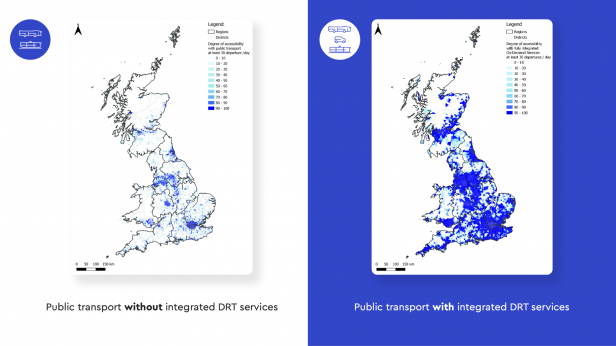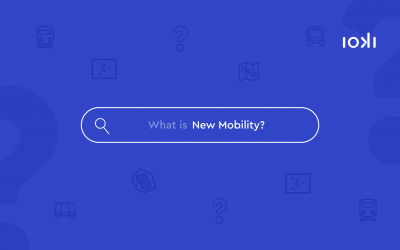But first things first: without public transport by bus, rail and on-demand transport, national and international climate targets can hardly be achieved. The UK also needs to reduce remaining emissions from domestic transport by around 34-45 per cent by 2030 and 65-76 per cent by 2035. However, the country’s Net Zero target* and a successful transport turnaround will only materialise if people’s mobility behaviour shifts permanently from private transport to an environmental network of public transport, cycling and walking.
« We must make public transport, cycling and walking the natural first choice for all who can take it. »
The Rt Hon Grant Shapps MP, Secretary of State for Transport
Based on our analysis, we found that over 90 per cent of the population in urban areas have access to bus, rail or metro. In rural areas from England via Wales to Scotland, sometimes only 60 per cent of the population can access local transport in their immediate vicinity. The difference becomes even more significant when we look at how often a stop is served during the course of the day. Just because a stop is available and thus access to public transport is provided, it does not mean that this stop is sufficiently served. But the quality of public transport is crucial for people to switch from the comfortable and always convenient private car to the local bus or regional train.
In order to achieve at least a small change in mobility behaviour, citizens would have to have a bus or train connection available at least every 30 minutes between 6am and 9pm. According to our calculations, this is the case in 19 per cent of rural areas in England and 17 per cent in Wales. Scotland brings up the rear with 15 per cent. Everything but perfect public transport.
… with demand-based and efficient services …
But how can cities, municipalities and local authorities cover these white spots on the map with new mobility offers? With on-demand shuttles integrated into the local transport system. They could take over all journeys within a radius of 5 km to a station or bus stop with at least 30 departures per day. Depending on the initial situation in the individual villages, towns and regions, on-demand transport could thus increase accessibility using local transport by more than 90 per cent in rural areas.

… to a more attractive transport offer
On-demand services as a fixed pillar of public transport could thus create equal living conditions and ensure that fewer cars are needed to be mobile in everyday life. After all, three on-demand shuttles can replace around 100 cars if they are planned and deployed according to demand. Cities, municipalities and local authorities reduce the travel time of their passengers and improve the cost efficiency and utilisation rate of their vehicles through intelligently pooled trips. The key success factor is integration into the existing public transport system. On-demand shuttles make it possible to access the entire county or city districts in the area and improve accessibility in terms of time as well as distance. A win-win situation for people and the climate!
* UK Government (2021): Link: https://assets.publishing.service.gov.uk/government/uploads/system/uploads/attachment_data/file/1033990/net-zero-strategy-beis.pdf



